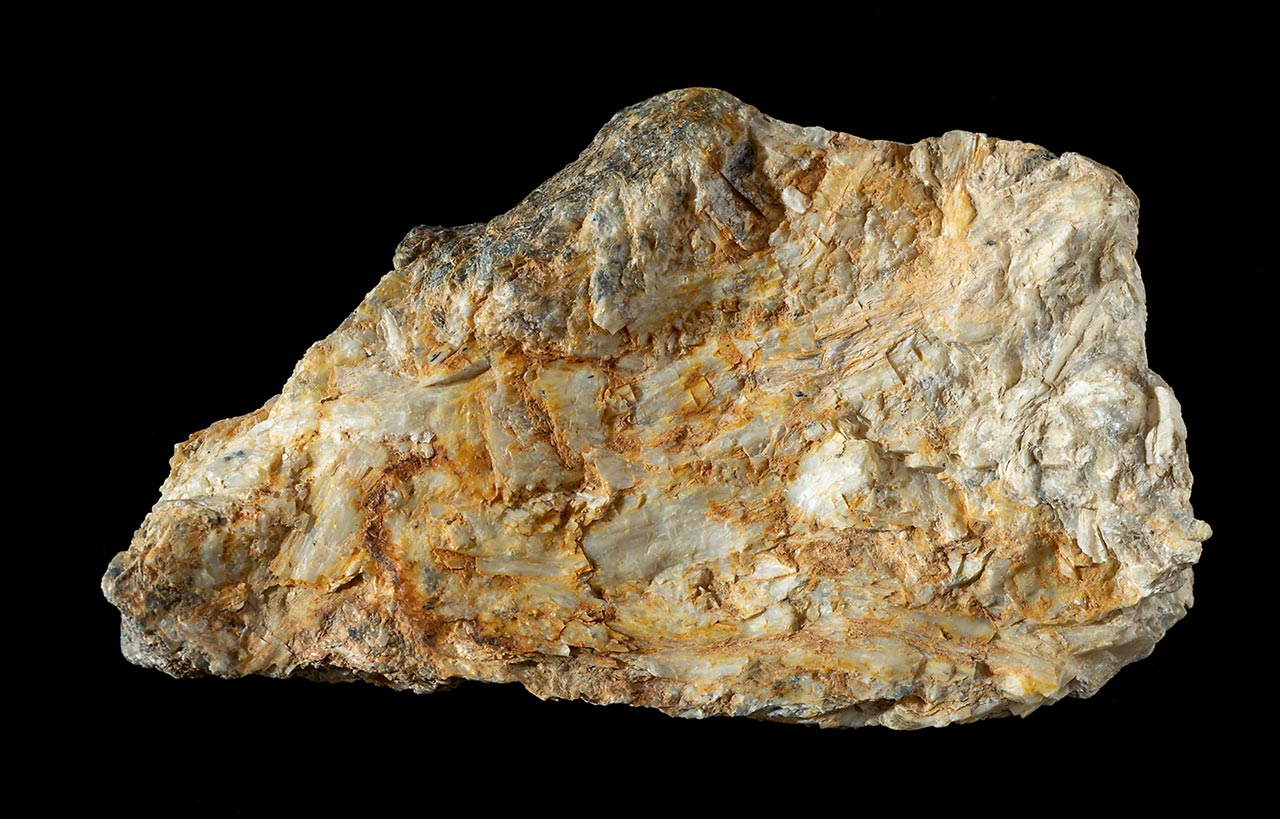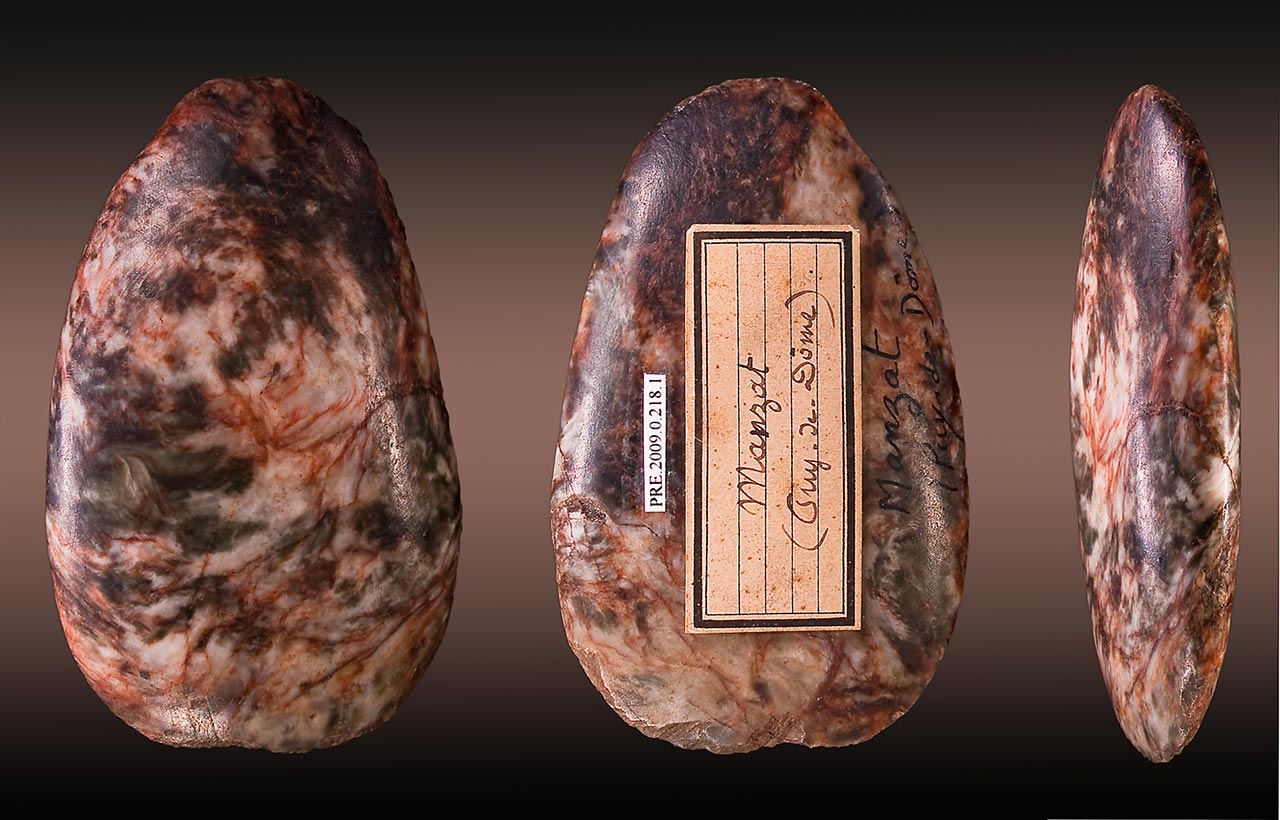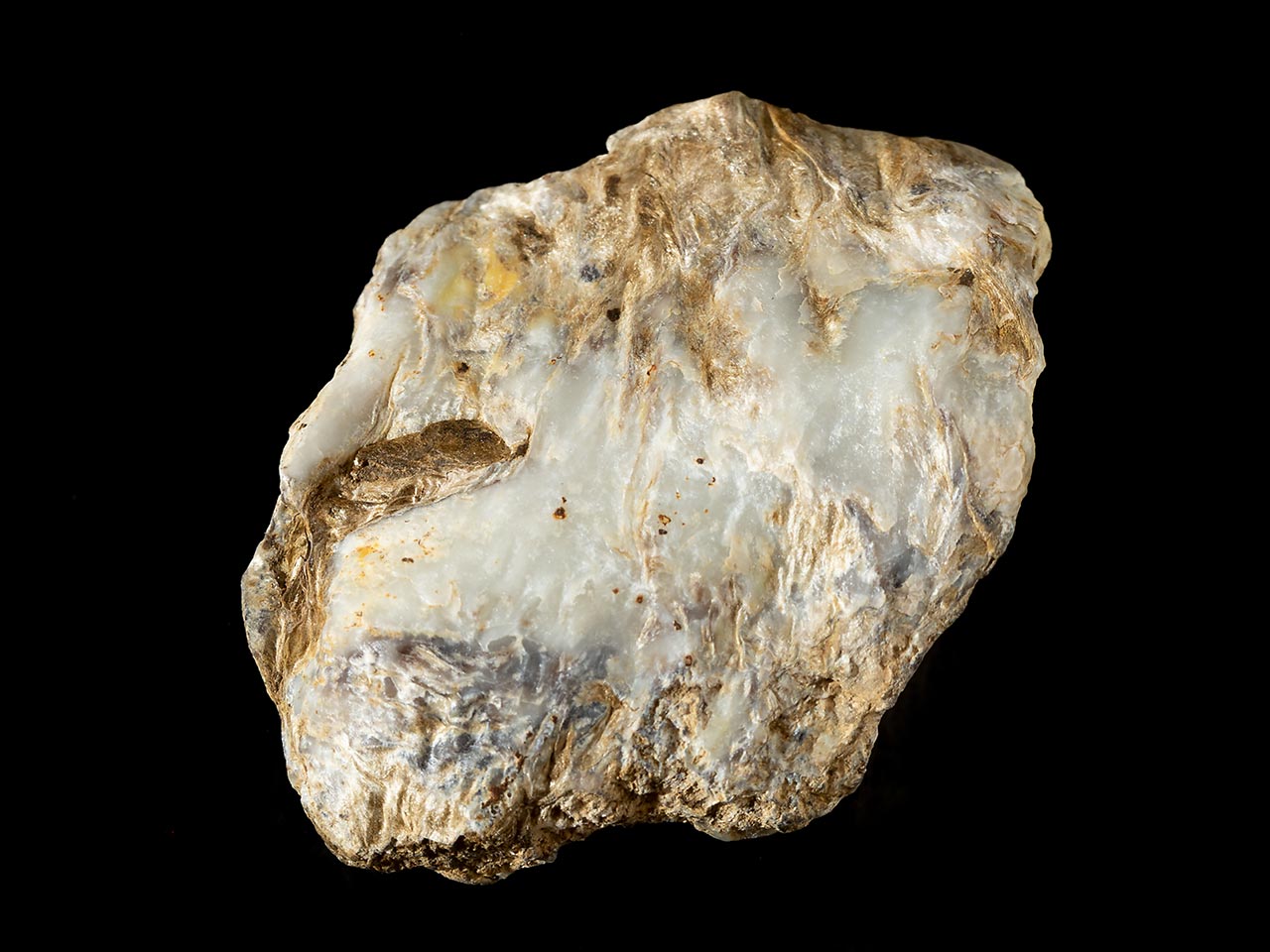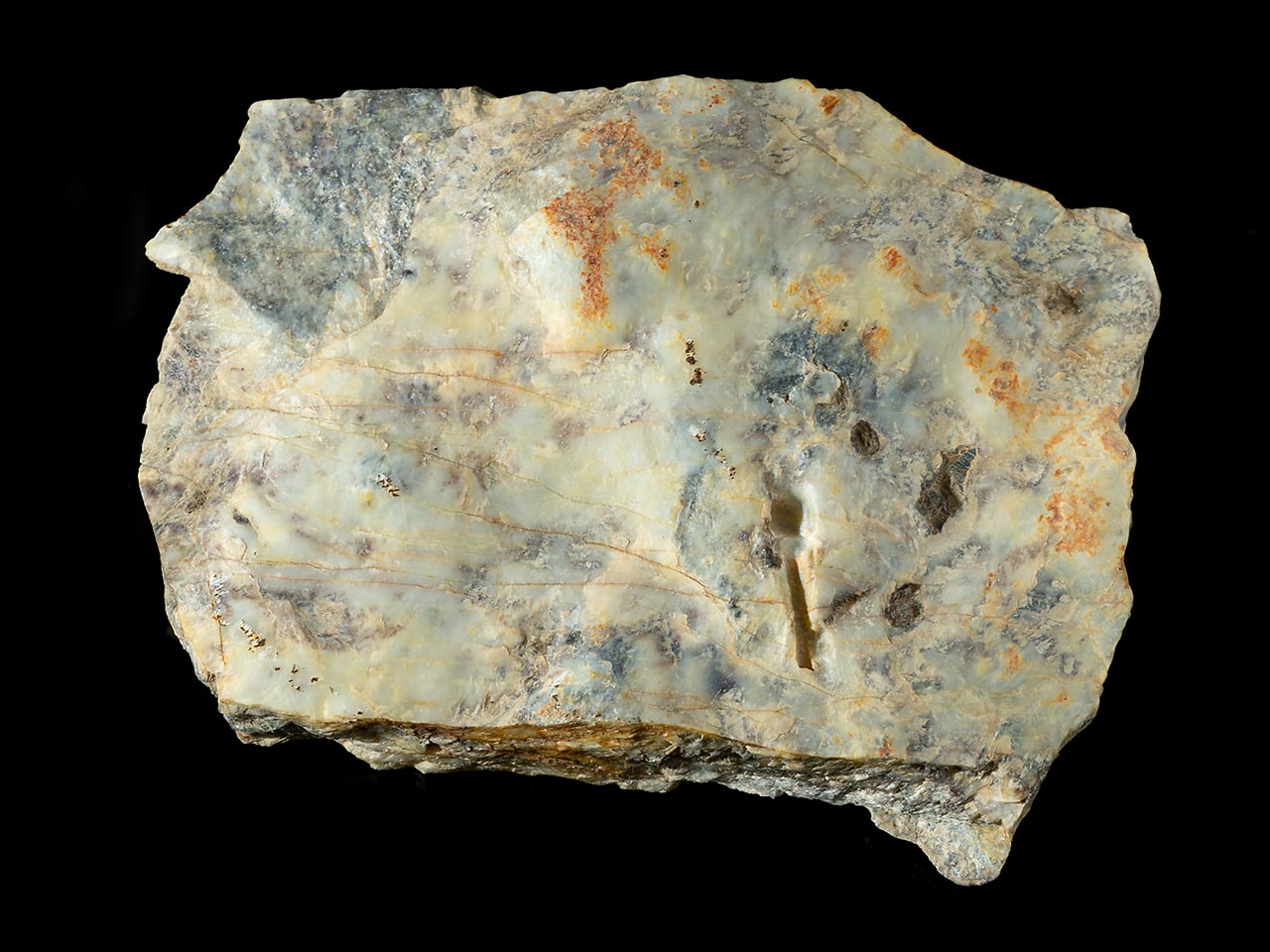Sillimanite – Mineral Properties, Photos and Occurrence
Sillimanite is a common rock forming aluminosilicate, especially important for metamorphic petrology and ceramics industry. It is usually fibrous but it can form columnar crystals and even rare gemmy specimens.
Crystal Structure of Sillimanite
Sillimanite is one of the three polymorphs with the formula Al2SiO5 (other two being kyanite and andalusite). Sillimanite crystallizes in the orthorhombic system. Most often, it is a fibrous mineral, sometimes with radiating crystal sprays. Less often, it is columnar, massive or compact. Prismatic crystals are very rare. The fibrous character is so well developed that a sillimanite variety is called fibrolite, which resembles a group of fibers twisted together.

Sillimanite can incorporate small amounts of Fe3+ and Ti in its structure.
Physical Properties of Sillimanite
Sillimanite is very often pale colored – white, pale yellow or light gray. However, it also offers a variety of reds, greens, or yellows that appear iridescent, where the surface changes color depending on the angle at which it is viewed or illuminated. The color strength itself is an artifact of its trichroic pleochroism, which it shares with the other two aluminosilicates.

Luster is vitreous to subadamantine, or silky. Its hardness is 7.0, with a white or colorless streak and a density of 3.2-3.3. Its fracture pattern is splintery, similar to kyanite. Cleavage is perfect.
Naming and Discovery
The first specimens from Carnatic Coast (Karnaka), Tamil Nadu, India were described as fibrolite in 1802 by Jacques Louis Comte de Bournon.
Then same mineral from Chester, Middlesex County, Connecticut in the Appalachian Mountain Belt was described as sillimanite in 1824 by George Thomas Bowen. It is named after the American chemist Benjamin Silliman (1779-1864), the first to teach mineralogy at Yale University, who was the father-in-law of the famed mineralogist, James Dwight Dana.

It was Dana, who in 1854 recognized that two minerals described as sillimanite and fibrolite are in fact one mineral. And despite traditional adherence to time priority in naming, in this case he made an exception and kept the name sillimanite.
Similar minerals
Sillimanite appearance might look similar as other pale colored and fibrous/acicular minerals: wollastonite, pale colored fibrous tremolite or other amphiboles. Mullite and dumortierite might look similar but they are quite rare and do not form big specimens. Columnar sillimanite can be mistaken for andalusite, pale amphiboles or pyroxenes, cordierite, gray-blue corundum and generally any pale colored prismatic/columnar mineral.
Sillimanite Origin
Sillimanite is a common metamorphic mineral, typical for high grade and aluminum rich metamorphic rocks. Its often present in para-gneiss and some hornfels, also in certain silica rich contact metamorphic rocks. Sillimanite rarely occurs in aluminum rich pegmatites.

Sillimanite is typically created by prograde metamorphism, but it can also appear during retrograde metamorphism. It can form pseudomorphs after andalusite or kyanite. Sillimanite often occurs together with andalusite or kyanite, but all three polymorphs of Al2SiO5 at one locality are rare.
Applications
As with andalusite and kyanite, sillimanite is a feedstock mineral for conversion to mullite Al6Si2O13 (see extended discussion in Andalusite, Applications chapter). It is considered the best raw material for manufacturing refractory bricks of 55 – 60% alumina. Its large-scale use is precluded, however, because of its cost.

Although all three Al2SiO5 polymorphs are usable for conversion to mullite, there is one significant parameter that distinguishes them – their porosity:
- Andalusite has virtually none, such that it is not highly adaptable to a variety of end products.
- Kyanite has a high porosity (17-20%) which allows it to be added as a component where counteracting shrinkage after cooling a heated product is required.
- Sillimanite has a modest porosity (6-7%), which allows its use in products where significant volume change is not desired. In addition, sillimanite offers resistance to a high-temperature and high-voltage products, such as the porcelain portion of spark plugs. It is not well-suited for applications in metallurgy, as it is easily corroded by iron and other molten metal oxides.
Occurrence of Sillimanite
Considered as a group, the leading industrial producers of the 3 polymorphs in aggregate are South Africa, US, France and India, although there are enormous variations in their historic production figures, stated reserves, and relevance to mineral collectors.
Probably the biggest known sillimanite crystals were found in Christmas Point pegmatite in Khmara Bay, Enderby Land, Antarctica. These crystals reach up to 10 x 3 cm in size and usually have brownish color due to the elevated Fe3+ content.
Very rare, though very tiny, are acicular sillimanite crystals growing inside the vugs in volcanic xenoliths of Laacher See Volcanic Complex, Germany. The tiny white sillimanite needles barely reach few milimeters in size.
Gem quality sillimanite is found in Mogok, Myanmar and in Ratnapura, Sri Lanka. Both localities have numerous collecting places, mostly in placers, but also primary deposits are known. While Sri Lanka produces mostly yellow to brown and small crystals (usually milimeters in size), Mogok produced also rare blue crystals and the biggest known gemmy crystal reached about 5 cm in size.

Large crystals come from various places in Orissa state, India. Interesting gray prismatic crystals of significant size are found within pegmatites in Val d’Ossola, Piedmont, Italy.
There are numerous significant localities in US: The co-type locality in Chester, Middlesex County, Connecticut yielded pale gray to brown columnar crystals. The host rock gneiss belongs to the Tatnic Hill formation and hosts two other localities of columnar brown sillimanite - Gray to brown columnar crystals and fibrous masses of sillimanite were found in Brandywine Springs, New Castle County, Delaware. Nice shaped brown crystals up to 15 cm large were found in Benson Mine, Star Lake, St. Lawrence County, NY, New York.
Pale colored white to pale gray or pale brown sillimanite is abundant in certain types of para gneiss worldwide. It usually forms microscopic or even visible fibers in the rock structure. Fibrous sillimanite (fibrolite) lenses or nodules within sillimanite-rich gneiss are usually present too.





Comments